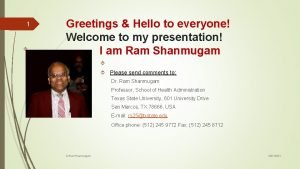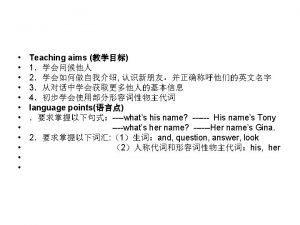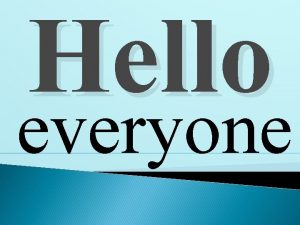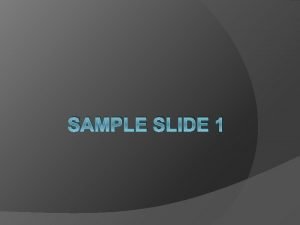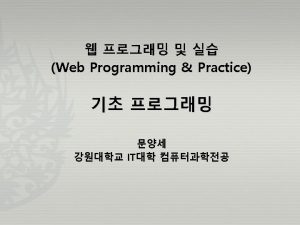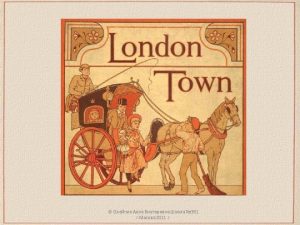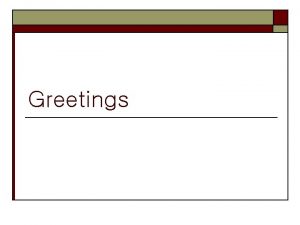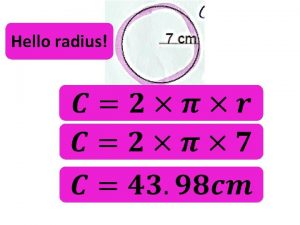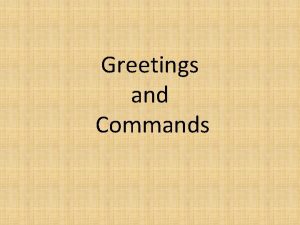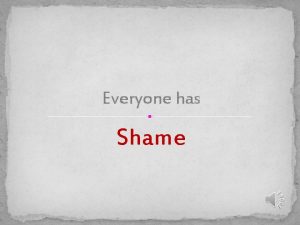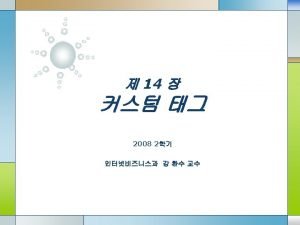1 Greetings Hello to everyone Welcome to my































- Slides: 31

1 Greetings & Hello to everyone! Welcome to my presentation! I am Ram Shanmugam Please send comments to: Dr. Ram Shanmugam Professor, School of Health Administration Texas State University, 601 University Drive San Marcos, TX 78666, USA E-mail: rs 25@txstate. edu Office phone: (512) 245 9772 Fax: (512) 245 8712 Dr. Ram. Shanmugam 2/27/2021

2 Topic of my presentation is Shortage, Illegal Trade, and Unmet Demand of Organ or Tissue Transplant Some of these are published in an article: Ramalingam Shanmugam (2015) Journal of Epidemiology & Community Medicine, 1, 1, page 1 -9. What is organ or tissue transplantation? It is replacing a person’s damaged or absent organ by an organ from a living or deceased person. The regenerative medicine allows sometimes to grow tissue from the person’s own stem cells. Organs or tissues that are transplanted within the person’s body are called auto grafts. Transplants that are performed between two subjects of the same species are called allografts. Dr. Ram. Shanmugam 2/27/2021

3 A selective history The first and earliest historical transplant was auto grafted skin in nose reconstruction called rhinoplasty by an Indian surgeon Sushruta in the 2 nd century B. C. Other noteworthy transplants and their time are now summarized. Dr. Ram. Shanmugam In 1905, a Czech Surgeon, Eduard Zirm performed the first successful cornea transplant. In 1950, an US surgeon, Richard H. Lawler performed the first successful kidney transplant. In 1967, the first successful heart transplant was done by a South Africa’s surgeon Christian Barnard. In 2005, an Indian surgeon, P. N. Mhatre did the first successful 2/27/2021 ovarian transplant.

4 What are popular transplants? Popularly transplanted organs are heart, kidneys, liver, lungs, pancreas, intestine, and thymus. Commonly transplanted tissues are bones, cornea, skin, heart valves, nerves and veins. Tissue is procured from those who experienced brain death or cessation of heartbeat. The American Association of Tissue Banks estimates that a million tissue transplants occur each year in the United States of America (USA). Bone marrow is a flexible tissue in the interior of bones. Bone marrow constitutes a four percent of the total body mass of humans, supporting the body’s immune system. Unlike organs, tissues are stored for a short duration, up to five years. Dr. Ram. Shanmugam 2/27/2021

5 A selective history (continues) There about 25 million people are listed as bone marrow donors worldwide. A practical difficulty in transplants is the recipient’s body rejection of organ/tissue due to antigens. This is resolved using a technique called serotyping, which checks the matching between the recipient and the donor. Dr. Ram. Shanmugam The World Health Organization (WHO) announced that about 66, 000 kidney transplants, 21, 000 liver transplants and 6, 000 heart transplants were performed globally in 2005. Still, there is a severe shortage of organs or tissues. A purchase or sale of illegal organs from live donors is prohibited in many countries. 2/27/2021

6 Stumbles for transplant For a variety of reasons, thousands of persons are waiting for organ transplant. The awareness to donate organs to use ought to increase so that their gap narrows. This number has been rising globally over the years, while the number of donors is quite stable. There might be cultural, religious, ethnic, or economic stumbles for not many donated organs for transplant. The supply of organs comes from the living or dead persons on voluntarily basis. Of course, the number of donors is trailing far behind the demand for organ transplant. At the same time, one wonders whether the demand for organ increases due to deteriorating health among world citizens due to environmental, genetic, or poor quality life practices. A promotion of healthy living might reduce the need for organ transplant. Dr. Ram. Shanmugam 2/27/2021

7 Facts For a lack of organs, about 22 people die every day. In 2014, about 29, 532 transplants occurred. An average of 81 transplants occurs every day in USA. Another person is added to the waiting list in every 10 minutes. Only 23, 715 transplants were from deceased donors. About 123, 000 people are waiting for an organ transplant. The year 2014 was a record- breaking year for the number of transplants performed and the number of deceased donor transplants. Dr. Ram. Shanmugam About 3, 500 heart transplants are performed annually worldwide. The majority of these (about 2, 300) are performed annually in the USA. 2/27/2021

8 Additional facts and interpret A single lung transplant takes about eight hours, while a double lung transplant takes about twelve hours to complete. A heart-lung transplant is carried out to replace both heart and lungs in a single operation. The figure 1 illustrates that there is a wider gap between the number waiting for organ and the number donors of organ. Dr. Ram. Shanmugam 2/27/2021

9 An explanation The number of persons who received transplants is more than the number of donors. Does this hint out the under-reporting of data occasionally, family members or friends to alleviate the suffering of loved ones donate organs and it may be not reported. The number waiting for organ transplant is much higher than the number of organ donors and it suggests a shortage for organ transplant. The number of organ donors is lesser than the number of recipients and it suggests that there must have been illegal organ trade [2]. The number waiting for organ transplant is higher than the number of recipients and it suggests the existence of unmet demand. Dr. Ram. Shanmugam 2/27/2021

10 Hence, We develope a statistical methodology to extract and interpret data information and then compute a confidence interval for shortage, illegal trade, and unmet demand About 80 percent of all organs are donated and used in the same geographic area. Many patients travel to countries, where organs are obtainable through commercial transactions. The unlicensed international organ trade is forbidden. with respect to organ transplantation. Dr. Ram. Shanmugam 2/27/2021

11 What does WHO mention? World Health Organization (WHO) urges nation to protect poor and vulnerable groups from undue exploitation of organ/tissue theft. Dr. Ram. Shanmugam Medical tourists travel to poor countries seeking cheap and illegal organ purchase. 2/27/2021

12 Evidences The number waiting for organ is about 700 percent more than the number of donors, which is only 46 percent of the number of recipients. How is that more recipients exist than the number of donors. The number of donors must have been underreported. Close relatives or friends could have donated organ to wipe out the suffering of those recipients. Such a donation is legal but should be reported. Dr. Ram. Shanmugam Questions: Q 1: The gap between the number of donors and the number of recipients is the data evidence for the existence of illegal transactions of organ trade. Is the gap statistically significant? Q 2: The gap between the number waiting for organ and the number of donors is shortage of organs for transplant. Is it statistically significant? Q 3: The gap between the number waiting for organ and the number of recipients indicates an unmet demand for organ transplant. Is the gap statistically significant? Q 4: Conditional on the removal of illegal organ trade (that is, YR = YD ), what might be the expected and volatility of organ shortage? 2/27/2021

13 To understand data information, First step is an appropriate model for the data. What is a model? Model is an abstraction of reality. Statistical methodology is constructed based on the model. Dr. Ram. Shanmugam Benefits are: For the importance of policy changes to encourage organ transplantation. The beneficiaries of organ transplantation would certainly have a higher quality life. 2/27/2021

14 Notations & model YW , YR , and YD represent the number of persons waiting, the number of recipients, and the number of donors respectively. Because of the large data size and the well-known central limit theorem, the random vector Y follows a trivariate Gaussian distribution Dr. Ram. Shanmugam 2/27/2021

15 Trivariate Normal Dr. Ram. Shanmugam 2/27/2021

16 Mahalanobis distance Dr. Ram. Shanmugam MLEs 2/27/2021

17 How to answer the questions? To answer the questions, we need to develop a new statistical methodology. For this purpose, let us provoke a statistical property of multivariate Gaussian distribution. That is, a contrast transformation, G = CY follows multivariate Gaussian, Dr. Ram. Shanmugam a 2/27/2021

18 Making results for the gaps Dr. Ram. Shanmugam 2/27/2021

19 Confidence interval for illegal organ trade Dr. Ram. Shanmugam 2/27/2021

20 Organ shortage Dr. Ram. Shanmugam Where 2/27/2021

21 Unmet organ demand Dr. Ram. Shanmugam Where 2/27/2021

22 To answer Q 4, when Dr. Ram. Shanmugam 2/27/2021

23 Illustration using WHO data on worldwide transplants during 1991 -2013 Dr. Ram. Shanmugam 2/27/2021

24 Continues Correlation Waiting number, YW Number of recipients YR Number YD Dr. Ram. Shanmugam of donor, Waiting number, Number YW of Number of donor, recipients YR YD r. WW = 1 r. WR = 0. 97 r. WD = r. RW = 0. 97 r. RR = 1 r. RD = 0. 99 r. DW = 0. 95 r. DR = 0. 99 r. DD = 1 0. 95 2/27/2021

25 Unmet organ demand Dr. Ram. Shanmugam 2/27/2021

26 Organ shortage Dr. Ram. Shanmugam 2/27/2021

27 Illegal organ trade Dr. Ram. Shanmugam 2/27/2021

28 If illegal organ trade is abolished, Dr. Ram. Shanmugam 2/27/2021

29 In conclusion, More awareness needs to me made among the potential organ donors about the importance of donating organs. Worldwide facilities ought to be established and supported to procure organs soon enough from those who unexpectedly die due to accidents or heart attack. In addition, stocking and preservation of unutilized organs should be encouraged for future implantation. The WHO ought to provide a leadership to promote and implement the above mentioned incentives among the nations. Priorities should be given to air transport the procured organs to the correct destination for transplanting them in those waiting for organs in a world of heavy traffic with congestions. Dr. Ram. Shanmugam 2/27/2021

30 Conclusion continues Times of India, on 31 July 2015 announced that the Indian Air Force (IAF) allowed its special aircraft, an Embraer, for a unique operation for transporting a kidney and a liver from Pune to Delhi to save the life of two critically-ill patients. This incidence cites the importance of promoting the importance of a quick air transporting organ or tissue from a remote place to a destination place worldwide. Dr. Ram. Shanmugam No forced donation must be allowed. Humans have a pair of organs. A human can live with just one organ. An illusionary tendency might exist to sell off one of the organ pairs for a high price. The market value of a kidney, a liver, and a heart are $100, 000, $250, 000, and $860, 000 respectively. 2/27/2021

31 Conclusion continues Thank you for your attention! I appreciate your comments! Please send me your thoughts via email rs 25@txstate. edu. Bye now!! Dr. Ram. Shanmugam 2/27/2021
 Good morning hello
Good morning hello Hello all good
Hello all good Hello hello to everyone it's english time
Hello hello to everyone it's english time Small head fat body
Small head fat body Hello everyone welcome to my presentation
Hello everyone welcome to my presentation Hello my channel
Hello my channel Hello what's your name jenny and you
Hello what's your name jenny and you Hello hello hello how are you
Hello hello hello how are you Hi steve what are you doing
Hi steve what are you doing Joining us today
Joining us today Hello everyone pic
Hello everyone pic Family father and mother i love you
Family father and mother i love you Hello everyone i hope you are all well
Hello everyone i hope you are all well Hello world nice to meet you
Hello world nice to meet you Hello everyone nice to meet you
Hello everyone nice to meet you Good morning hi
Good morning hi Good morning everyone and welcome to my presentation
Good morning everyone and welcome to my presentation Dog poems for kids
Dog poems for kids Welcome everyone in spanish
Welcome everyone in spanish Good evening professor
Good evening professor Welcome back i hope you enjoyed your vacation
Welcome back i hope you enjoyed your vacation ________ (speak) más despacio, por favor.
________ (speak) más despacio, por favor. Hi everyone welcome my house
Hi everyone welcome my house Welcome everyone in spanish
Welcome everyone in spanish Hello pt
Hello pt Hello my friend song
Hello my friend song Hello peter pan
Hello peter pan Hello hello 1 2 3
Hello hello 1 2 3 Hello my friend
Hello my friend Hello i am muzzy
Hello i am muzzy Hello hello nursery
Hello hello nursery Hello how are you conversation
Hello how are you conversation




